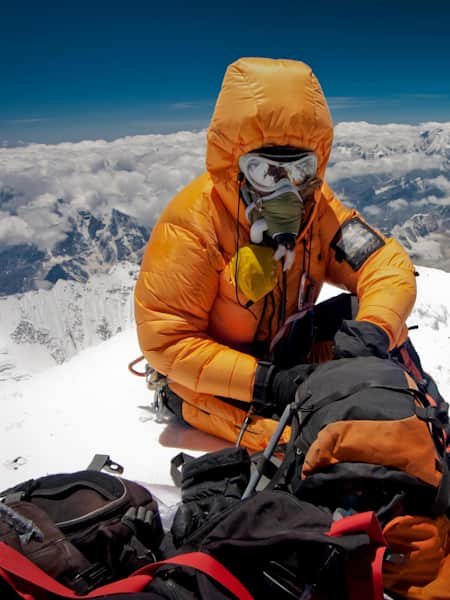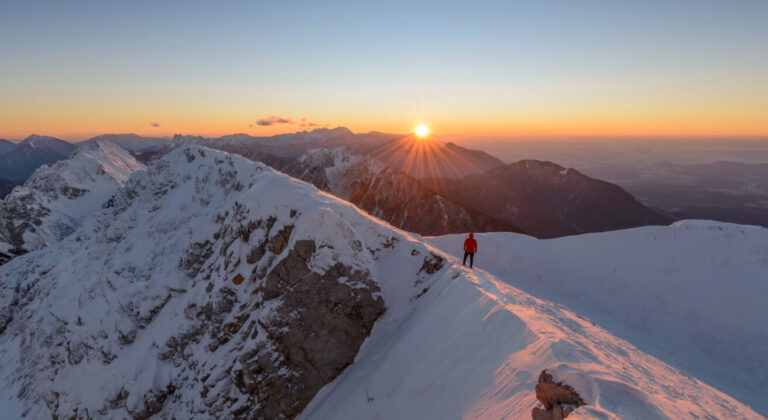When it comes to a mountaineering expedition, one must prepare for a myriad of terrain and weather conditions. While the journey may begin on well-trodden paths under the heat of the sun, higher elevations often present challenges such as traversing snow-covered slopes and battling chilling winds.
To ensure comfort and adaptability during mountaineering, layering is key, akin to the strategy employed in backpacking. Layering allows for easy adjustment as conditions shift or exertion levels fluctuate. Should perspiration arise, shedding a layer provides relief, while feeling chilled prompts the addition of clothing for warmth. Understanding the nuances of layering is fundamental, providing flexibility and comfort throughout the ascent.
The selection of appropriate layers for mountaineering hinges on various factors including destination, season, and anticipated conditions. This guide aims to elucidate the essentials of dressing for mountaineering by delineating common options for base layers, mid layers, insulation layers, outer layers, and accessories.As decisions are made regarding attire, certain considerations merit attention:
- Weather volatility: Anticipate rapid changes in temperature and weather conditions, spanning from lower elevations to glacier-crossing summits.
- Balancing weight and comfort: Strive for a well-appointed pack without unnecessary bulk, considering the tradeoffs between warmth and weight.
- Prioritizing functionality: Select clothing with features tailored to personal preferences and performance needs, while avoiding superfluous additions that contribute to weight and cost.
- Choosing fabrics wisely: Opt for wool or synthetic materials over cotton, since cotton retains moisture and lacks insulation properties, whereas wool or synthetic materials ensure quick drying and efficient warmth retention.
By heeding these principles and carefully curating a versatile wardrobe suited to the demands of mountaineering, adventurers can embark on their journey well-prepared for the challenges that lie ahead.
Base Layers for Mountaineering
The importance of next-to-skin clothing items in mountaineering cannot be overstated, as they play a vital role in keeping your skin dry by wicking moisture away, ensuring warmth and comfort. Opting for fabrics like polyester or merino wool is recommended for their moisture-wicking properties.
- Underwear: The choice of underwear style is a matter of personal preference, but prioritizing airy, breathable options made from wool or synthetic materials is advised.
- Bras: Pullover sports bras without clasps are often the most comfortable, as they eliminate the risk of metal or plastic parts digging into your skin, especially when carrying a heavy pack.
- T-shirt: While some climbers may opt to wear their long-underwear top to save weight, a lightweight synthetic or wool T-shirt can be a valuable layer for warmer approach hikes. Whether opting for short or long sleeves depends on the need for ventilation or sun coverage.
- Long-underwear top: A long-underwear top is typically worn throughout the entire climb, making it essential to choose one that suits your needs. Consider features like a zip-neck for ventilation and opt for a lightweight or midweight wool or synthetic top, preferably offering UPF sun protection.
- Long-underwear bottoms: Essential for mountaineering climbs, long-underwear bottoms are worn underneath climbing pants to provide warmth and comfort, particularly during breaks or while sleeping. Lightweight or midweight options made from wool or synthetic materials are recommended, with heavyweight bottoms suitable for colder conditions.
- Socks: Quality socks are paramount for keeping feet warm, dry, and comfortable during climbs. Opt for wool or synthetic options over cotton, with the choice of weight depending on temperature and personal preference. Bringing two pairs for a multi-day trip is typically sufficient, with lighter weight options for lower elevations and midweight or heavyweight pairs for higher altitudes.
Mid Layers for Mountaineering
Worn over base layers, mid layers offer warmth, abrasion resistance, and protection against water and wind. Classic choices for mountaineering include fleece jackets, soft-shell jackets, and soft-shell climbing pants.
- Fleece jacket: Ideal for layering over long-underwear tops during breaks or early morning starts, a lightweight fleece jacket provides warmth and versatility.
- Soft-shell jacket: Offering better wind and water resistance than fleece jackets, soft-shell jackets are interchangeable options, with the added benefit of enhanced breathability. Look for features like a helmet-compatible hood for added functionality.
- Soft-shell climbing pants: A staple for every mountaineer, soft-shell climbing pants offer durability and weather protection, making them suitable for various conditions. Designed for flexibility and range of motion, they can be worn over underwear during warmer approaches and layered under rain pants as temperatures drop.
- Sun hat: Essential for sun protection during intense hikes, a wide-brimmed hat or baseball cap provides shade, with some options featuring a sun cape for added neck coverage.
- Liner gloves: Providing warmth and protection against snow, lightweight liner gloves are recommended for lower elevations, offering sun protection and added comfort.

Insulation Layers for Mountaineering
The amount of insulation required greatly depends on the destination and the time of year. For climbs in consistently cold environments, a substantial insulated jacket and possibly insulated pants are essential. However, for lower peaks or climbs in milder climates, a lighter jacket without insulated pants may suffice.
- Insulated jacket: A jacket with insulation and a hood is vital for maintaining warmth in mountainous environments. Keep this layer easily accessible in your pack for quick donning during breaks. Choosing between down and synthetic insulation depends on factors like budget, climate, and packability. Down offers excellent warmth-to-weight ratio but loses insulation when wet, while synthetic insulation is bulkier but retains warmth even when damp.
- Insulated pants: While optional, insulated pants are beneficial for climbs on larger peaks or during early or late-season ascents. Look for pants with full-length side zippers for easy wearing over boots and crampons. Similar to jackets, insulation options include down and synthetic materials.
- Winter hat: Opt for a low-profile winter hat that fits comfortably under a climbing helmet.
- Glacier glasses: Everyday sunglasses may not suffice at higher altitudes. Glacier glasses are specifically designed to protect eyes from intense light and reflection off snow. They typically feature wrap-around extensions for added coverage and have a lower visible light transmission compared to regular sunglasses.
- Midweight gloves: As elevation increases, liner gloves may not provide adequate warmth. Midweight gloves offer the necessary insulation while maintaining dexterity for handling equipment.
- Gaiters: Essential for keeping snow and rain out of boots, gaiters also prevent snagging crampons on baggy pant cuffs. Choose tall gaiters with instep reinforcements for optimal protection.
Outer Layers for Mountaineering
Outer layers serve as waterproof protection against rain and snow, essential for maintaining dryness during adverse weather conditions.
- Waterproof jacket: Seek a simple waterproof/breathable shell jacket with a helmet-compatible hood and strategically positioned pockets for accessibility while wearing a backpack.
- Waterproof pants: Lightweight waterproof shell pants are indispensable for keeping underlying layers dry in wet conditions. Full-length side zippers facilitate easy wearing over boots and crampons.
- Ski goggles: In anticipation of cold temperatures and high winds, bring ski goggles in addition to glacier glasses for enhanced warmth and wind protection.
- Neck gaiter or balaclava: To shield the face from cold winds, use a versatile neck gaiter or balaclava that can also serve as a hat or ear band.
- Insulated mittens: Insulated mittens provide essential warmth in frigid conditions, albeit at the cost of some dexterity. Keep them accessible in your pack for when temperatures drop.










